Many historians agree that the Great Depression officially started on October 29, 1929. Determining an end date is a bit more difficult. The general consensus is that World War II is what ended it. In America, millions were out of work and suffering hit a majority of the population. During this period a number of custom body builders went out of business because those who had wealth didn’t have as strong desire to display it as they did before that fateful date. There were exceptions, like this gorgeous 1941 Cadillac Fleetwood Town Car being sold on eBay out of lovely Annandale, Minnesota. With a $26,995 buy it now price, this may be your opportunity to purchase one of the last examples of the town car body style. Thanks to T.J. for the tip on this town car!
A town car was basically a body style used by people with means. The chauffer drove from an exposed front section while the passengers were cocooned in a much more luxurious and ample rear cabin. The difference in social class between the front seat and the rear cabin was obvious. Given that many car body styles had their start in the horse drawn carriage days, the idea of a “town car” is hundreds of years old. You could argue that the concept still lives today in the form of a limousine with a divider separating the driver from the rest of the car.
Before the depression wealth was generally seen as a good thing and those who had wealth didn’t have much of a social problem in showing it. Town cars, while never common, were sometimes seen and many surviving classic cars are of this body style. Henry Ford even marketed a Model A Ford with a town car body. After the effects of the Depression took hold, the idea of purchasing a fancy car with such a body became an issue. One reason so many luxury car makers and the companies that bodied their cars went out of business was the severe drop off in demand for such vehicles. Partly because there were fewer people able to afford them and partly because it is somewhat uncomfortable to ride around in such a vehicle when others are suffering.
By the close of the thirties, town car body styles had pretty much gone the way of the dodo and the carrier pigeon. Which makes the 1941 Cadillac we see in these pictures all the more surprising. The seller tells us that this is a Derham Body Company conversion to a Series 75 Cadillac limousine. Derham Body Company was headquartered in Philadelphia and had been in business since the horse and buggy days. They originally built carriages but got into the car body business when customers requested their services. Known for making both their own bodies and modifying production cars, the company managed to survive into the 1960s, with their primary business basically centered around armoring luxury cars at that point.
As you can see from the pictures that the areas where the body was modified exhibit high quality work. Derham was a well-respected firm, and their client list was basically a who’s who of the industry and the power brokers of the era. It is a shame that there is no history of the car given in the ad. It appears that the seller purchased the car from an estate sale and that the car was in the process of a full restoration when the work ground to a halt. The ad clearly states that they believe that they were able to gather nearly all of the parts. Obviously, there is no way for them to know if they got everything, but the seller makes available photos of the parts that come with the car.
The ad states that the car has been repainted and it is obvious that re-assembly had been started. The question is when was this car painted? On a car like this usually no expense is spared in restoring it. If the painting was done years ago, the car may require another round of disassembly and refinishing. Luckily the seller is very open to prospective buyers coming around and having a look at the vehicle and the parts that accompany it. The auction is also generously open for a month or until someone comes up with the buy it now price.
We are told that the engine is freshly rebuilt although it has not been started yet. Once again, the accommodating seller will do what is necessary to start the engine if a prospective buyer requests. The good news is that the engine is the venerable 346 cubic inch L-head V-8 that Cadillac used for a number of years. Putting out a respectable 150 horsepower at 3,400 rpm this engine had a reputation for both smoothness and the low-end torque that buyers of this type preferred. Interestingly, this engine was also produced for military use during World War II, powering M5 Stuart and M24 Chaffee tanks.
While the car itself is fascinating and has tremendous potential as a reasonably priced entry into the world of high-end prewar automobiles, the fact that such a vehicle was made so late into the Depression is the real interesting part. Town cars were made after the war but were mostly one-off show cars meant to harken back to more prosperous times. This car was one of the last gasps of class structure as represented in vehicle form. Not that this form of expression ever left us, as Rolls Royce and Mercedes-Maybach vehicles serve the same purpose today. It is just that the division between driver and owner isn’t as obvious.
If history repeats itself, will these cars go extinct as well?
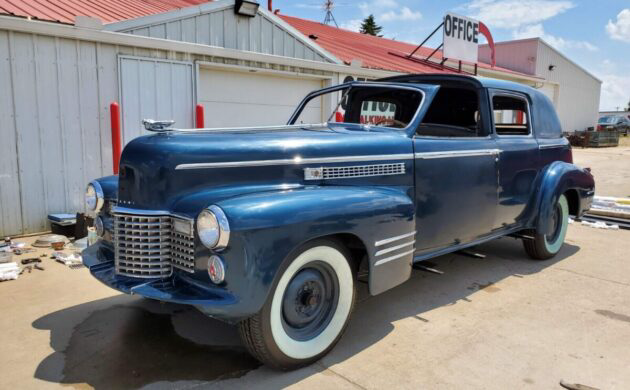
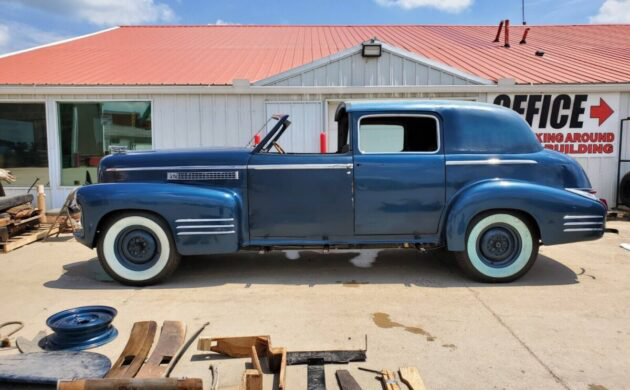


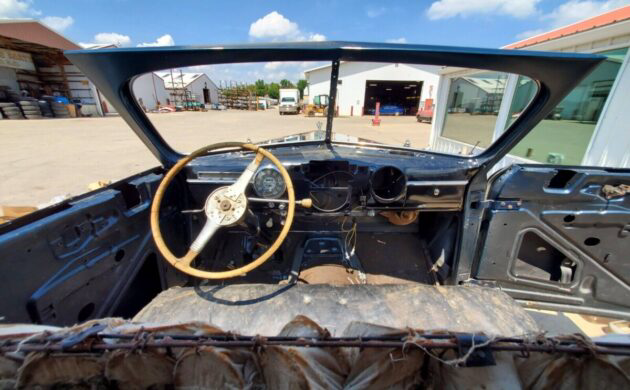
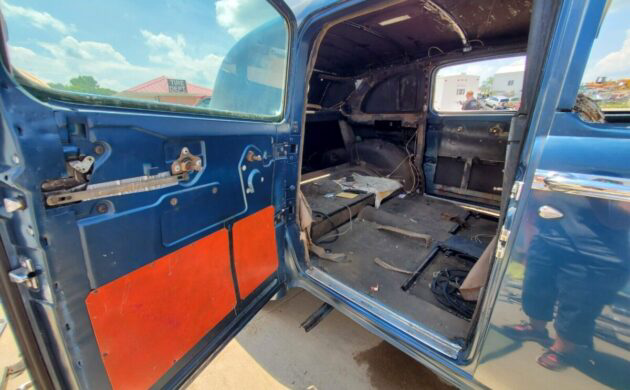
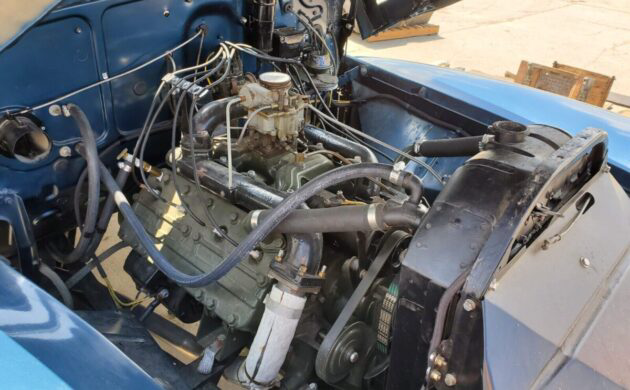


Town cars had their heyday when it was common for a high-end chassis and body to be built separately, and it was a relatively easy matter to separate them with the original owner placing his towncar body on a new chassis and the second owner of the chassis added (inevitably owner-driven, sometimes sporting) bodywork.
The advent of streamlining and greater integration between bodies, fenders and hoods made this more difficult, and the factory price of a town car over a standard sedan was substantial (in 1939 a Cadillac V-8 Fleetwood 7-passenger formal sedan listed at $3210, a Town Car $5115, enough of a difference to buy a second, Fisher-bodied Caddy) and likely not recouped at resale time.
Moving from automotive to general history, there were economic ups and downs within the ’30s, a rough sketch being that the “depths of the Depression” generally were the Hoover years, the New Deal had its’ intended effect by the mid ’30s until a balking Congress and hostile SCOTUS forced the scaling-back of stimulus in the late ’30s, which was in turn reversed by the buildup of armament that had started by 1940.
Please explain the idea of making the poor driver be exposed to the elements. Was the intent to humiliate and in turn, elevated the rich persons self esteem? I have no problem that these companies went out of business. That kind of blatant class stratification has no place in our society, nor should any decent person make excuses for it. I have no problem with rich people, heck, I did pretty good myself if you ask me, but to flaunt your wealth is childish and cruel.
Holy cow, what a car. Needs to be 1000% saved. I wonder if it comes with its own red carpet?
Yeah, but it is not a Porsche.
Thank God!
What’s a Porsche?
A fancy VW
Sadly, I recognize this stage of restoration. Right about here, the tap runs dry. Nice paint, went through the motor. An illness or death usually puts the skidders on these projects, and nobody wants to finish it. For Shame!! Dad was so close, and what a car to be proud of. No bids, always tough to pick up someones half baked project, and for what, a pre-WW2 vehicle practically no one has any connection to today, it will sit and collect dust. Sorry to be so glum, but that’s just the way I see it with these unfinished projects. There weren’t many of these, as said, who knows what “royalty” or movie star rode in the back. Obviously, dad wanted a piece of that, and never got to see it.
Showing off your wealth and status with a limousine is one thing, but paying extra so your lower class driver can be exposed to the elements is something else. Hence the slogan “eat the rich”.
I’m afraid that I agree with Howard. Someone started the big items like the engine rebuild and paint and then its restoration stalled, for whatever reasons. Other than a pre war car club buying and completing it, I don’t know too many average guys would tackle such a project.
For all the reasons Jeff gives in his writeup, I also don’t see this body style having much appeal to collectors today either. Rare doesn’t necessarily equal desirable. I can see a movie-car supplier fixing this up to the point it looks good on camera; it would make a great addition to a period film or TV show. Otherwise, its best and brightest future might be as a hot rod. Cynical and sacrilegious, I know.
Does it come with an umbrella?
This car sets off the “Whoa Bubba” alarm. No way around it, it is a treasure of automotive art & history. Granted not a daily commuter, certainly worthy of being housed in an appropriate garage, complete with 100% wool carpeting beneath its tires. Looking closely and noodling with my NO.-2 pencil, the bottom line cost for putting this “Land Yacht” back in shape would be a little shy of $45,000. The serious buyer could research the VIN and most likely determine who originally bought the car, and across it’s operational life, who enjoyed the rear seat. Heck, you take the current asking price add the $45K and that is the price for a new Chevrolet Silverado.
I’ll take the Silverado.
Comments like this is what separates barnfinds from bringatrailer.
I will buy this unique vehicle and have it finished. Then I will be chauffeured by a monkey in a white uniform with golden epaulettes, high on cocaine. Only the monkey, of course!
3 of us bought a ’48 hearse while in college to take to spring breaks, football games, etc. Casket held the ice and beer, big couch in back and jump seats up front held the passengers, and that glass smooth V8 rolled silently down the road. It was huge and heavy and a bunch of fun.
My late friend and college roommate had a 1948 Fleetwood series 75 7-passenger without a division window. Great fun to load it up for buck night at the drive inn. That flathead V8 ran smooth and strong but circumstances dictated him to sell it. It was sold in the Twin Cities area and I’ve often wondered what became of it. If anyone knows where a 48 Fleetwood 75 with body number 444 (of 449 made) is – please let me know!!!
Yeah, maybe a Film studio will buy and restore this type car for period Pieces. It would be just a drop in their budget bucket. It’s just not the type restoration project for your average guy who likes 60s and 70s American muscle cars that they can enjoy restoring and driving daily.